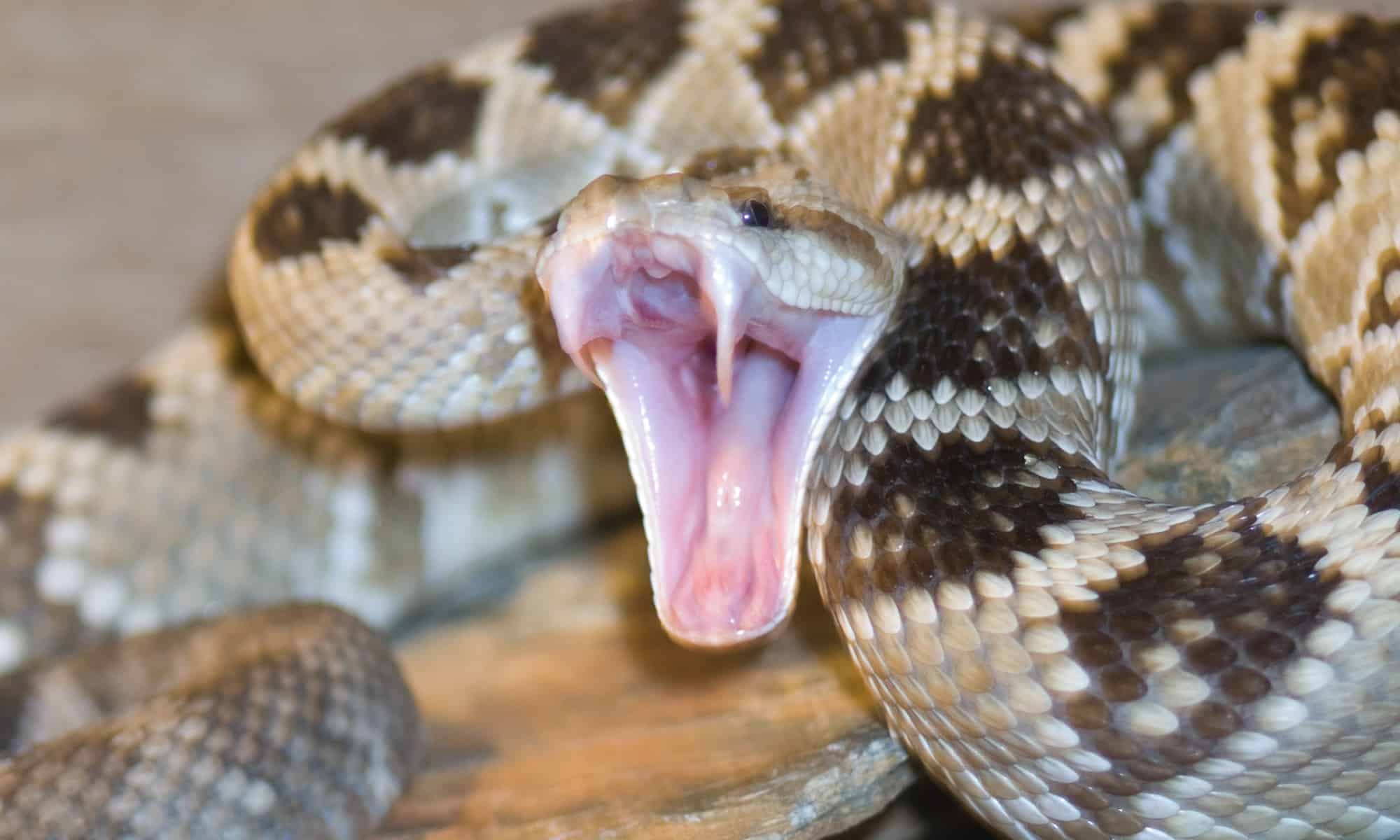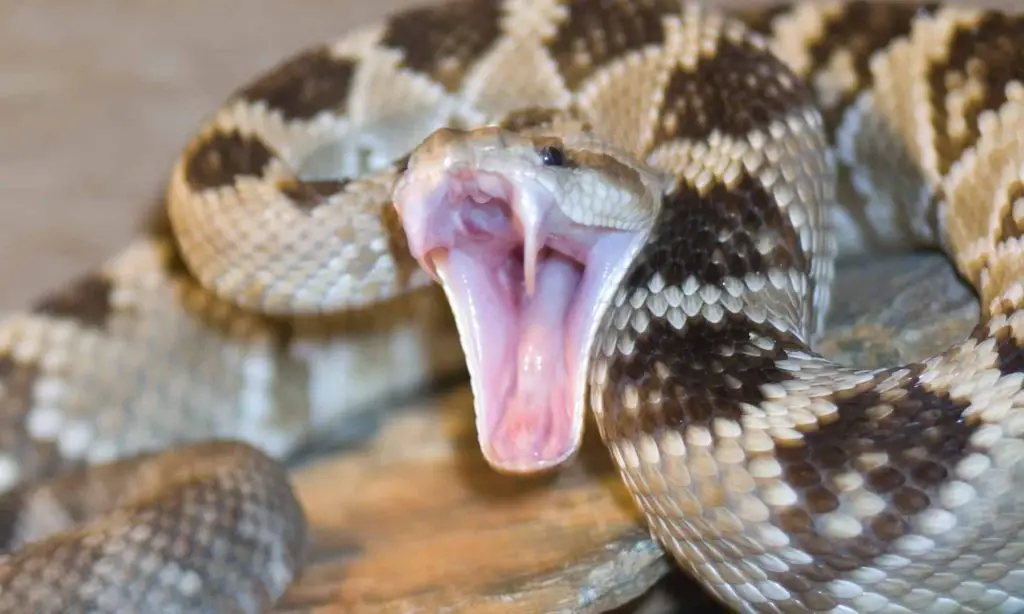Rattlesnakes are notorious for their venomous bite, which can be deadly to humans and animals alike. But have you ever wondered just how long their fangs actually are? In this article, we’ll explore the fascinating world of rattlesnake fangs, from their size and shape to their deadly function in the wild. So let’s get started and discover the truth about these formidable creatures.
Rattlesnake fangs can vary in length depending on the species, but they can reach up to two inches long in some cases. These sharp, hollow fangs are designed to inject venom into their prey or predators, and they are constantly replaced throughout the snake’s life. So whether you’re a snake enthusiast or simply curious about the natural world, read on to learn more about these amazing creatures and their unique adaptations.
Rattlesnake fangs can vary in length depending on the species, but on average they measure between 0.5 to 2 inches long. The longest fangs belong to the Eastern diamondback rattlesnake, measuring up to 2.5 inches. Rattlesnake fangs are curved and hinged, allowing them to fold back against the roof of the mouth when not in use.

How Long Are Rattlesnake Fangs?
Rattlesnakes are known for their venomous bite, which they deliver through their fangs. But just how long are rattlesnake fangs? In this article, we’ll explore the anatomy of rattlesnake fangs and how they work.
Anatomy of Rattlesnake Fangs
Rattlesnake fangs are actually modified teeth. They are long, hollow, and curved, with a sharp point at the end. The fangs are located in the upper jaw of the snake, behind the regular teeth. When the snake bites, it can retract the fangs back into the roof of its mouth, allowing it to close its mouth and swallow prey.
The length of rattlesnake fangs can vary depending on the species of snake. On average, they range from 0.5 to 2 inches in length. The fangs of some species, like the Mojave rattlesnake, can grow up to 2.5 inches long. The length of the fangs can also depend on the age and size of the snake.
How Rattlesnake Fangs Work
When a rattlesnake bites, it injects venom into its prey through its fangs. The venom is produced in glands located behind the eyes of the snake and travels down through a duct to the fangs. When the snake bites, muscles in its head contract, forcing the venom through the fangs and into the prey.
Rattlesnake venom is a complex mixture of proteins that can cause a range of symptoms in humans and animals. Depending on the species of snake and the amount of venom injected, symptoms can range from mild swelling and pain to paralysis and even death.
The Benefits of Rattlesnake Fangs
While rattlesnake fangs may seem like a dangerous weapon, they actually serve an important purpose in the ecosystem. Rattlesnakes are predators that help control populations of rodents, rabbits, and other small animals. Without rattlesnakes, these populations could grow out of control and cause damage to crops and other natural resources.
In addition, rattlesnake venom is being used in research to develop new drugs for a variety of medical conditions. Some compounds found in rattlesnake venom have been shown to have anti-cancer properties, while others have been used to develop painkillers and blood thinners.
Rattlesnake Fangs vs. Other Venomous Snakes
While rattlesnake fangs are some of the longest in the world of venomous snakes, they are not the longest. That honor goes to the Gaboon viper, which has fangs that can grow up to 2 inches in length. However, rattlesnake fangs are still formidable weapons that have made them one of the most feared predators in the animal kingdom.
Compared to other venomous snakes, rattlesnakes are unique in that they have a warning system. Their distinctive rattle, which is made up of a series of hollow segments at the end of their tails, alerts potential threats to their presence. This warning allows humans and animals to avoid rattlesnakes and prevent bites.
Preventing Rattlesnake Bites
If you live in an area where rattlesnakes are common, there are steps you can take to avoid being bitten. Always wear protective clothing when hiking or working outdoors, including sturdy boots and long pants. Watch where you step and avoid tall grass and rocky areas where snakes may be hiding.
If you do encounter a rattlesnake, give it plenty of space and do not try to handle it. Remember that rattlesnakes are an important part of the ecosystem and should be left alone whenever possible.
In Conclusion
Rattlesnake fangs are an impressive adaptation that allows these predators to subdue their prey and defend themselves from threats. While their venom can be dangerous to humans and animals, rattlesnakes are an important part of the ecosystem and play a vital role in controlling populations of small animals. By understanding how rattlesnake fangs work and how to avoid encounters with these predators, we can coexist with them in a safe and respectful way.
Frequently Asked Questions
In this section, you will find the answers to some of the most common questions about rattlesnake fangs.
1. How are rattlesnake fangs structured?
Rattlesnake fangs are very interesting structures that have evolved to help these snakes effectively hunt and kill their prey. The fangs are located at the front of the snake’s mouth and are made up of a hollow, tubular structure that is filled with venom. The fangs are also curved, which allows them to get a good grip on their prey and inject venom into the wound.
Most rattlesnake species have two sets of fangs, one on the top jaw and one on the bottom jaw. These fangs are constantly being replaced throughout the snake’s life, with new ones growing in to replace old or broken ones.
2. How long can rattlesnake fangs get?
The length of rattlesnake fangs can vary depending on the species of snake. On average, however, rattlesnake fangs can range from 0.5 to 2 inches in length. Some species, like the Eastern Diamondback Rattlesnake, have been known to have fangs that are over 2 inches in length.
Despite their impressive length, rattlesnake fangs are actually quite delicate structures that can be easily broken or damaged. This is why the snakes are constantly replacing their fangs throughout their lives.
3. How do rattlesnake fangs work?
Rattlesnake fangs are used to inject venom into the snake’s prey. When the snake bites its prey, the fangs puncture the skin and the venom is injected into the wound. The venom then goes to work breaking down the prey’s tissues and immobilizing it.
Most rattlesnake species have a type of venom that is both hemotoxic and neurotoxic. This means that the venom can affect both the victim’s blood and nervous system, leading to a range of symptoms depending on the species of snake and the amount of venom injected.
4. How dangerous are rattlesnake bites?
Rattlesnake bites can be very dangerous, especially if left untreated. The amount of venom injected, the location of the bite, and the size and health of the victim can all affect the severity of the bite.
Some common symptoms of a rattlesnake bite include pain, swelling, bruising, and difficulty breathing. In severe cases, victims can experience shock, paralysis, and even death. It is important to seek medical attention immediately if you are bitten by a rattlesnake.
5. How can I avoid getting bitten by a rattlesnake?
The best way to avoid getting bitten by a rattlesnake is to be aware of your surroundings and take steps to avoid them. Rattlesnakes are most active during the warmer months and are typically found in rocky, dry areas.
If you are hiking or camping in an area where rattlesnakes are known to live, make sure to wear sturdy boots and long pants to protect your legs. You should also avoid reaching into crevices or under rocks where a snake could be hiding.
Insane Fangs of the Eastern Diamondback Rattlesnake!
In conclusion, the length of rattlesnake fangs can vary depending on the species and age of the snake. However, on average, rattlesnake fangs can range from 0.5 to 2 inches in length. These fangs are not only used for defense but also for hunting and catching prey. Despite their intimidating appearance, rattlesnakes play an important role in maintaining the balance of their ecosystem. Remember to always respect these fascinating creatures and give them plenty of space when encountering them in the wild.


